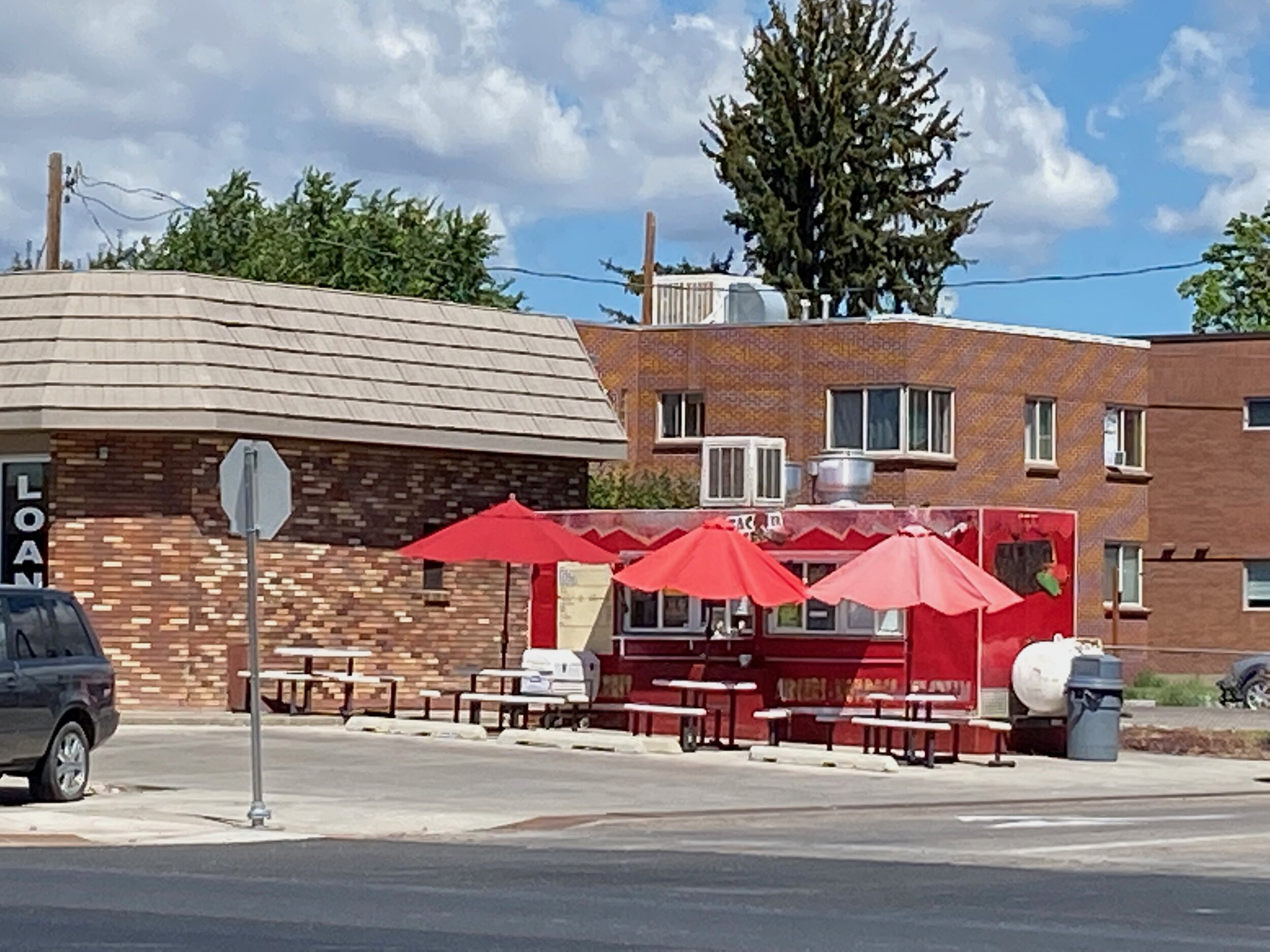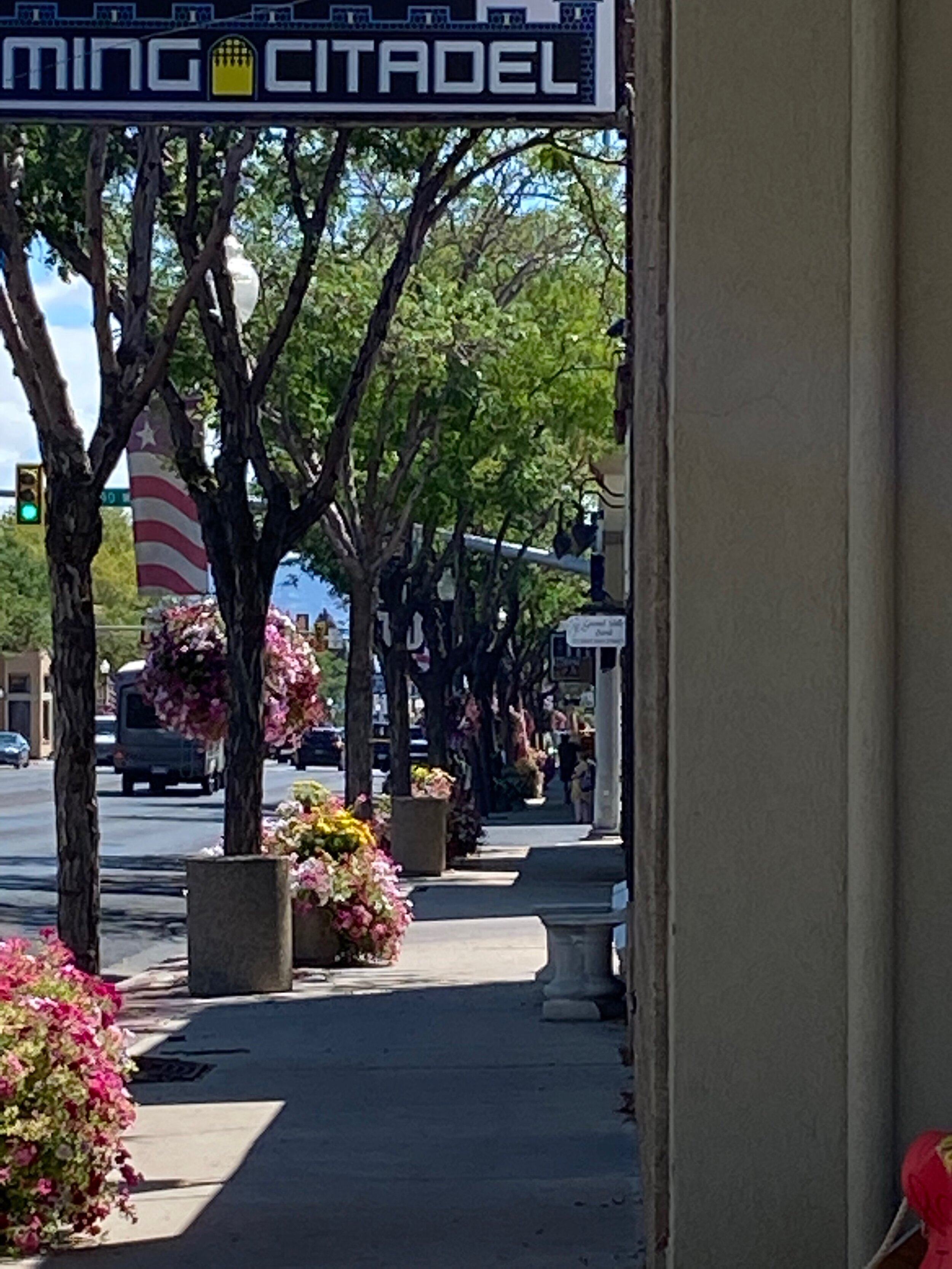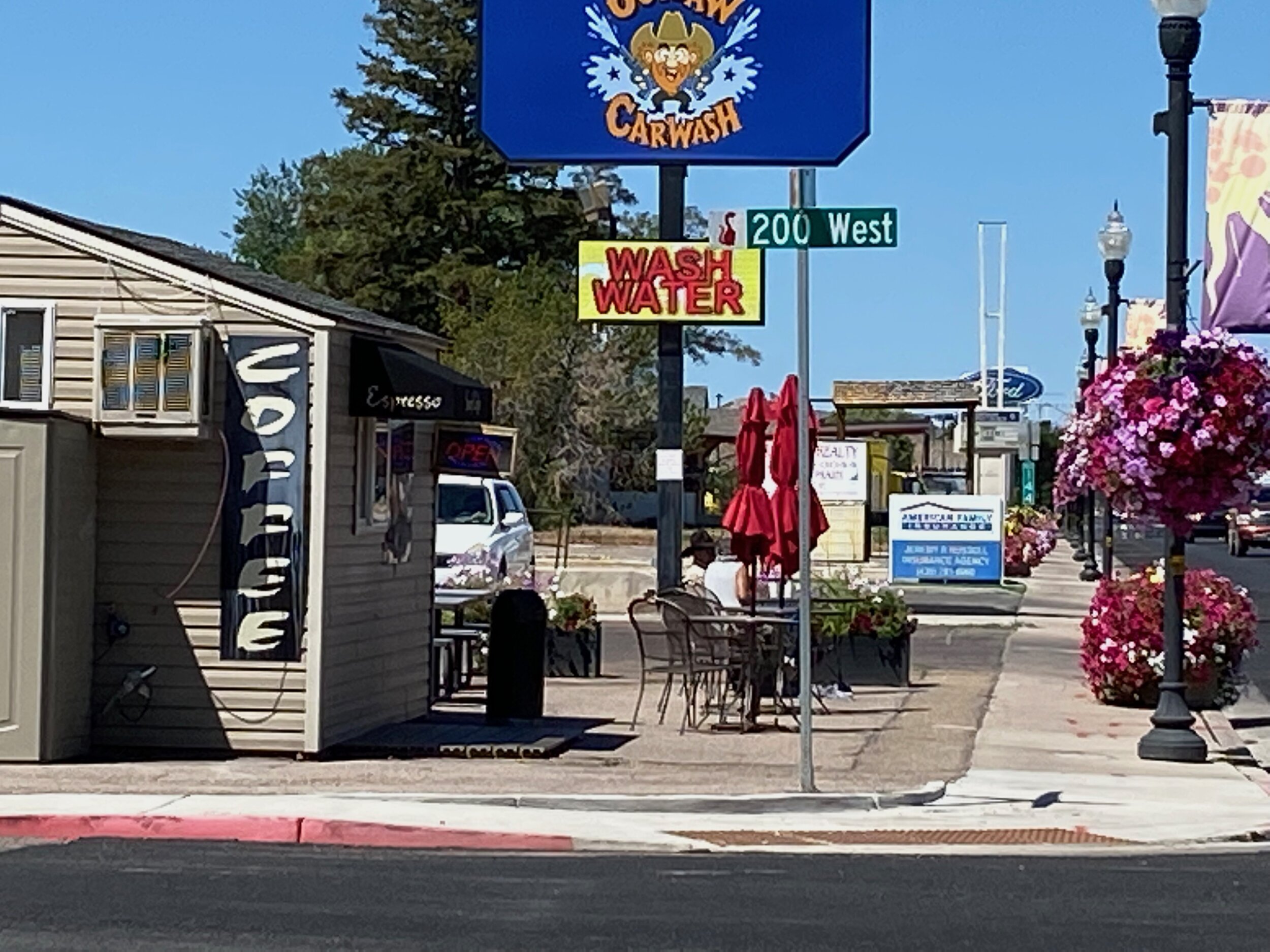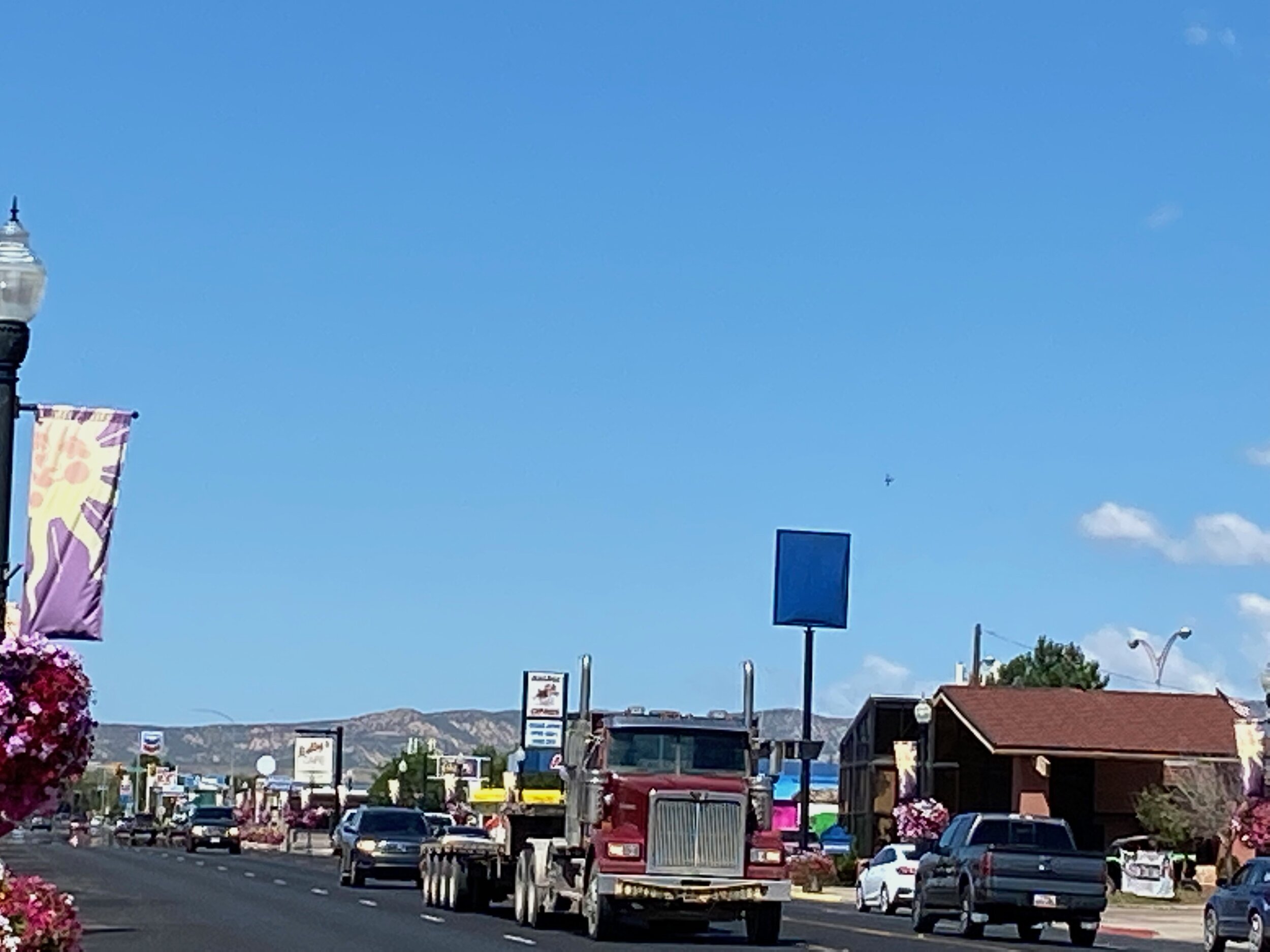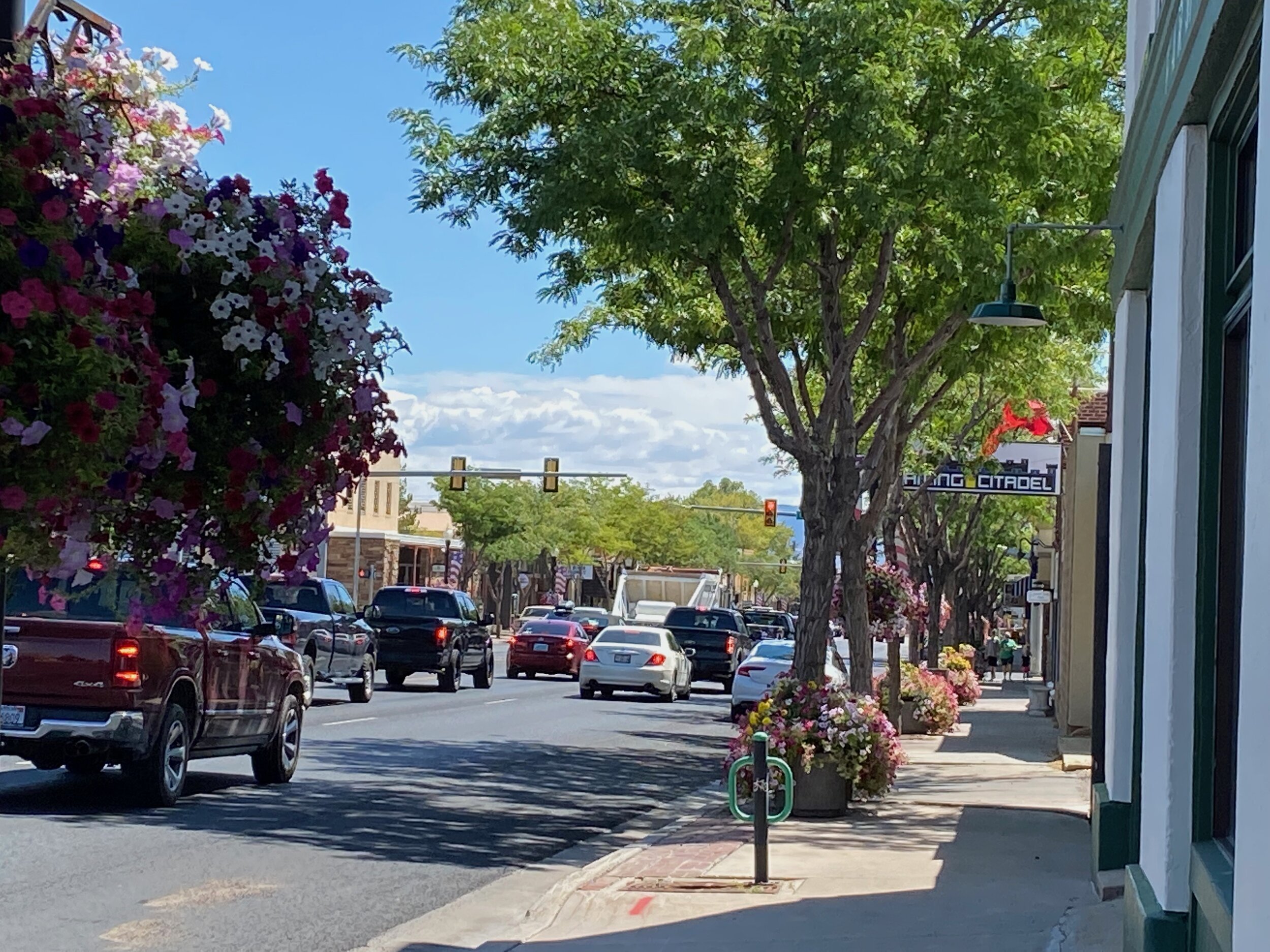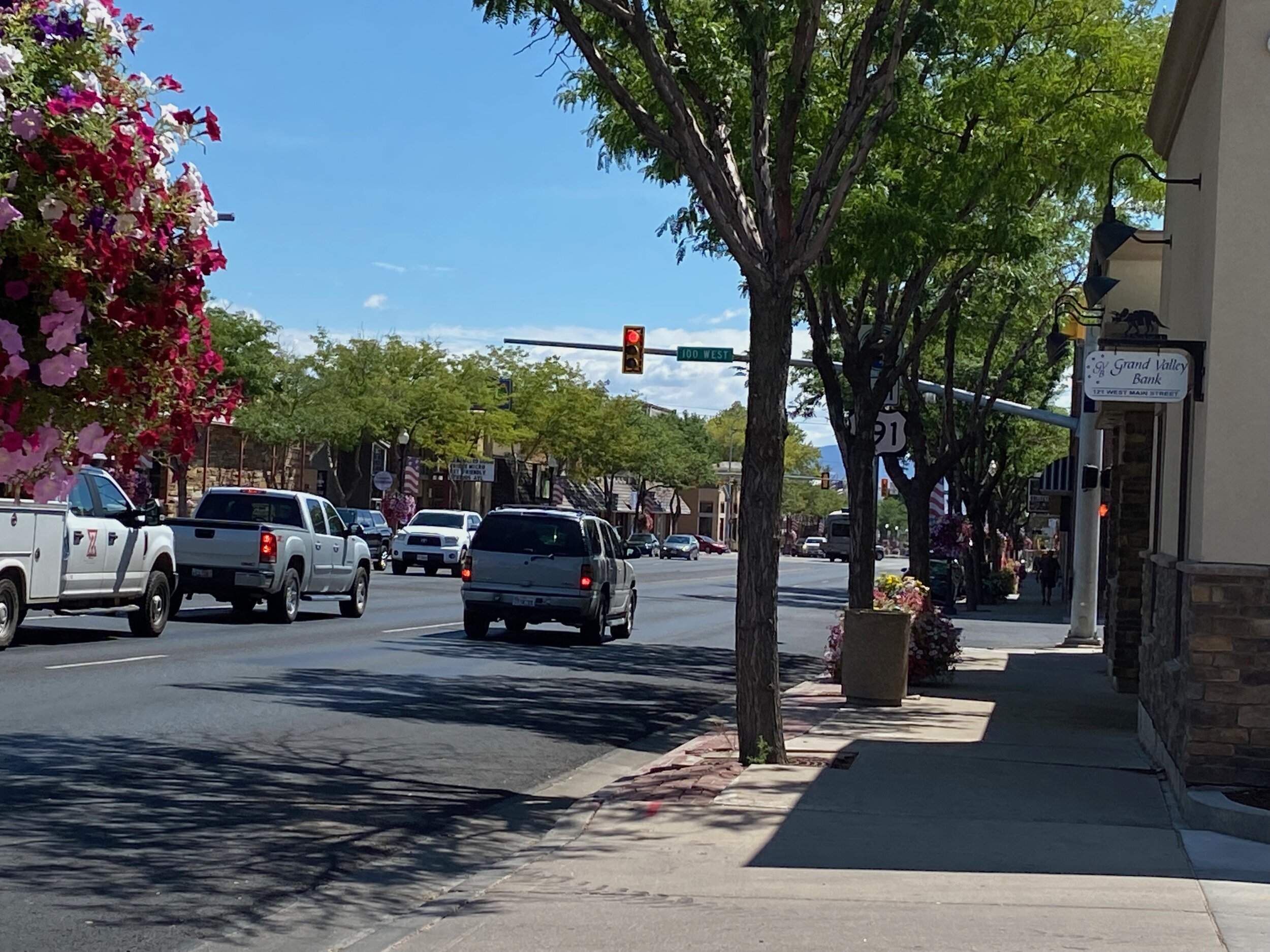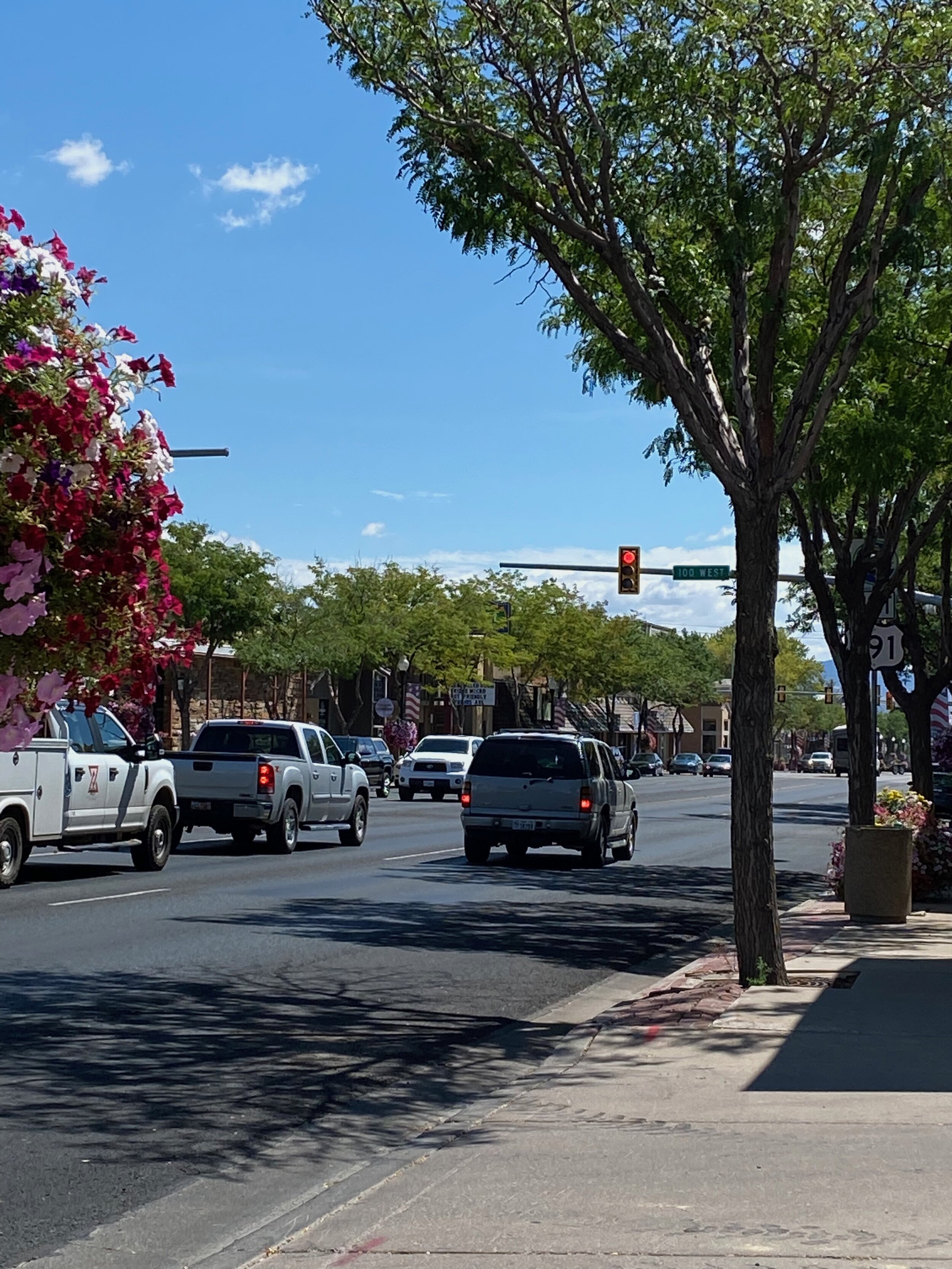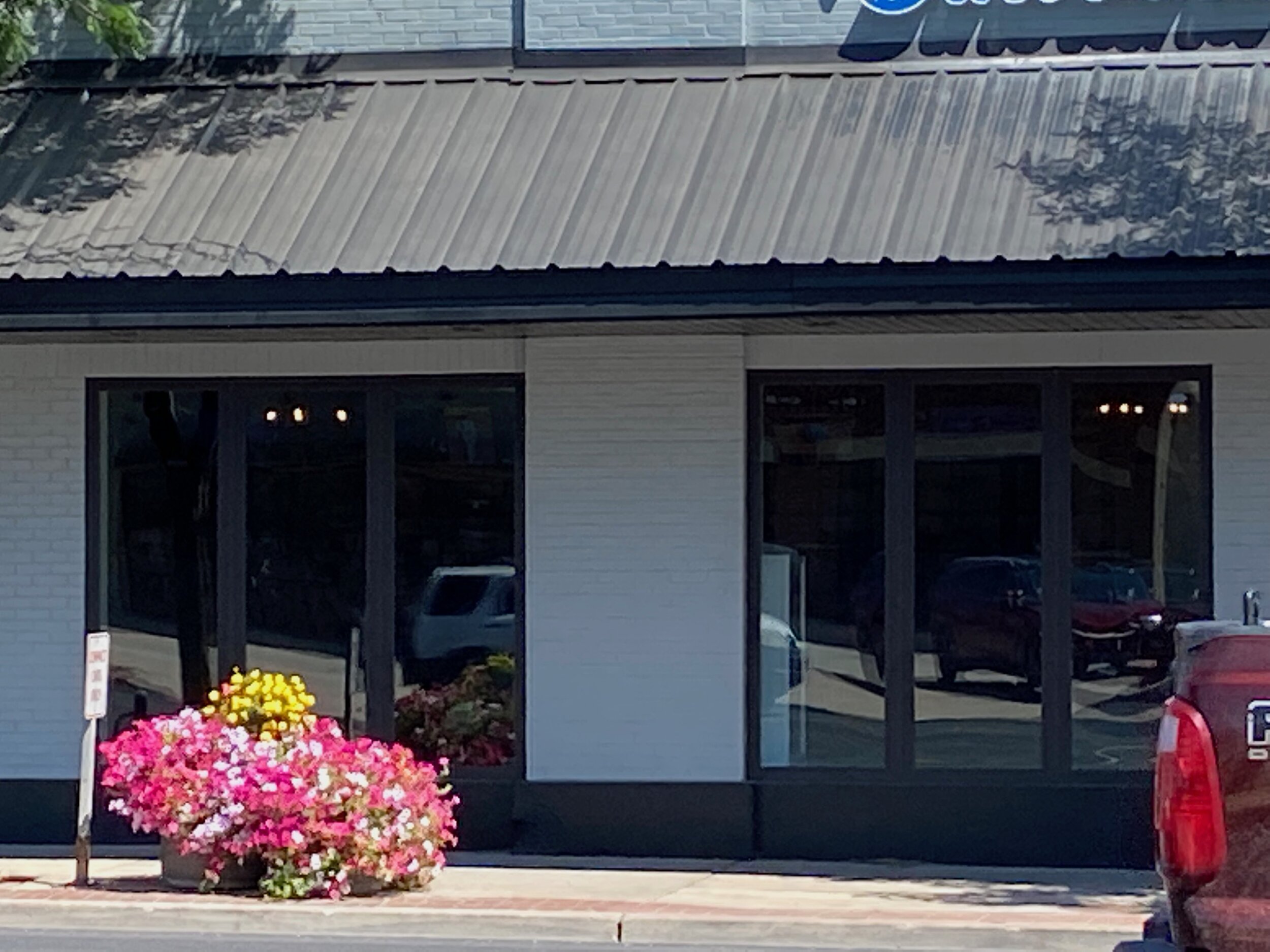Vernal
Vernal Utah, a tiny city, population 10,000, in the middle of the high desert, surprisingly, has its own airport. It has its own airport because there are a number of oil and gas industrial sites as well as phosphate and uintaite mining well hidden behind the nearby mesas and hills. Haliburton and Schlumberger have branch offices in town. I’m guessing, but I do believe that airport is probably for those people. But for outdoor enthusiasts who enjoy hiking, biking, camping, desert and mountain terrains, dinosaurs, petroglyhs, white water rafting trips, fishing or bird watching the ability to fly into Vernal is a hidden bonus.
Driving into Vernal, colorful flower pots and hanging flower baskets line the main street. I doubt that the city managers are wooing Haliburton officials. I think those flowers, the pop up coffee cottages, and the cute signs are for the tourists. Without both of these wildly divergent groups of people Vernal would be 13 bleak, sun-baked blocks lining a major highway, sinking into obscurity. But it is not.
Vernal is crazy weird like that. First of all there is no good reason anyone settled there except that they liked the desert. There is little water there, no beaver to trap, no transportation system (the railroad never ran anywhere close), a desert environment, no other animals to exploit, very little farmable land, and the largest body of water, the Green River, running between steep canyon walls, was mostly inaccessible. In the 1800’s even the mormons refused to settle the area. A few men, and in the beginning there were only men, built cabins near Ashley Creek, a few miles away from where Vernal is now, and started to ranch cattle in the valleys near the water. For some unknown reason a man named David Johnston brought his family to what was called “the bench” a large barren cactus flat. To quote the website “historytogo.utah.gov,
‘It was reported that when they (the David Johnston family) stopped their wagons, David took his shovel from the wagon and cleared off the cactus so the children could stand without getting cactus needles in their feet. He put the wagon on logs to keep it off the ground as there were many lizards, horned toads, scorpions, mice and snakes in the area.”
You might be thinking, like Mary and I, that was just plain nuts, totally bonkers, crazy town. No-one in their right mind would do such a thing. But they did. The town of Vernal was settled, an irrigation system was built cooperatively by the townspeople. They raised cattle and sheep, and made money milling, selling honey and farming grains and alfalfa. It did not become a ghost town, not even during the depression. In 1909 a huge number of dinosaur bones were found in the area and 6 years later Dinosaur National Monument became a National Park. Vernal was the closest town with anything to offer and so the first tourists arrived to bolster the economy. Oil and gas popped into the picture in 1948, though that source of revenue was subject to boom and bust. So a town, crazily built in a cactus field, miles from water managed to survive and thrive. Good for them! Not every town in the United States can share that fate.
After driving through the south, witnessing one economically depressed city after another, all seemingly wallowing in lost-thecivil-war self-pity, as well as infrastrure and community devastation with little imagination or effort in sight, Vernal’s perseverance is nice. Kudos to those city managers with enough imagination to at least put into action some ideas to make sure Vernal is still here long after the oil and gas people have moved on again.
One of the nicer things that some city officials did, other than the absolutely lovely flower pots, was to create a slick tourist booklet with accompanying pamphlets. In the booklet it describes and maps out all the surrounding parks and wildlife areas, including, but not only Dinosaur National Monument. The pamphlets consist of off-the-beaten-tracks drives to see petroglyphs, views of the mountains, old outlaw haunts, nearby reservoirs and old cemeteries. There are 13 drives you can choose from. We only had time for one, but I have to say it was pretty cool. We drove along the river valley, where there are wetlands to the oldest cemetery in the area. Desert to wetlands, you get how odd that drive is. Given that no-one moved into the area till 1873, the cemetery is chock full of “old” gravestones.
I’m from the east coast. When we call something historic or old, we are talking about the 1600, 1700’s. Of course in Spain, or Italy when you talk about “old” you are talking about walking around a church built in 700AD. Old is relative to your history. This was the moment when I realized that for people who settled in the west, their history starts in the 1800’s, sometimes the LATE 1800’s. For them, their history is only 150 years old. The Revolution, George Washington, Thomas Jefferson, the civil war, get no mention here. But that discussion is for another time.
Back to Vernal. It’s a sweet little town, trying hard to be even hipper and happening. I applaud them. It’s a great and frankly, the only spot to stay, for seeing the surrounding National and State Parks. You could easily spend a week there, just hiking and rafting in Dinosaur, plus there are these other drives and apparently swimming beaches at the reservoirs. You will find a brewery, restaurants, an arcade place, a game store and an escape room. Most of the hotels have pools. There is enough there to keep you and your kids satisfied, happy and fed.
